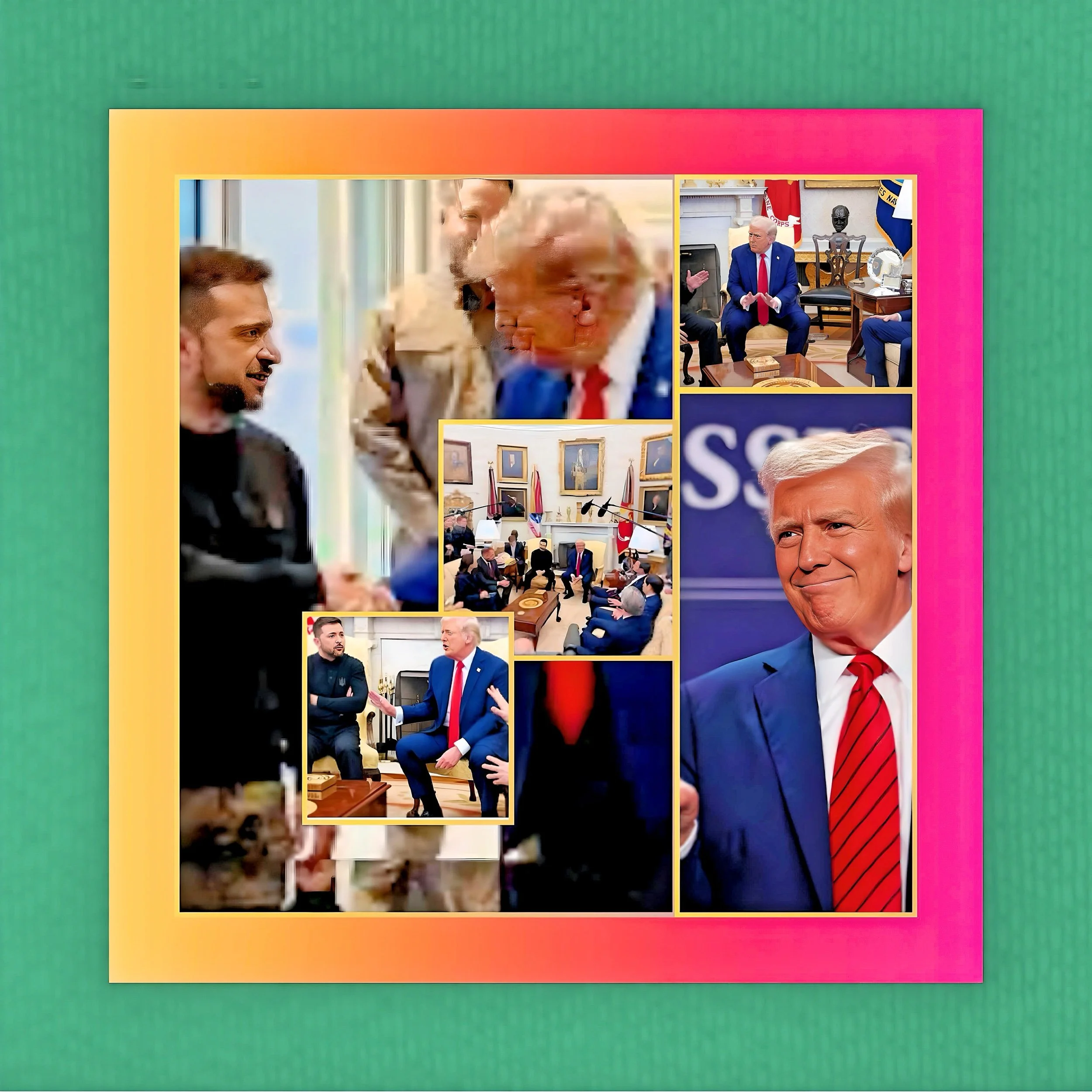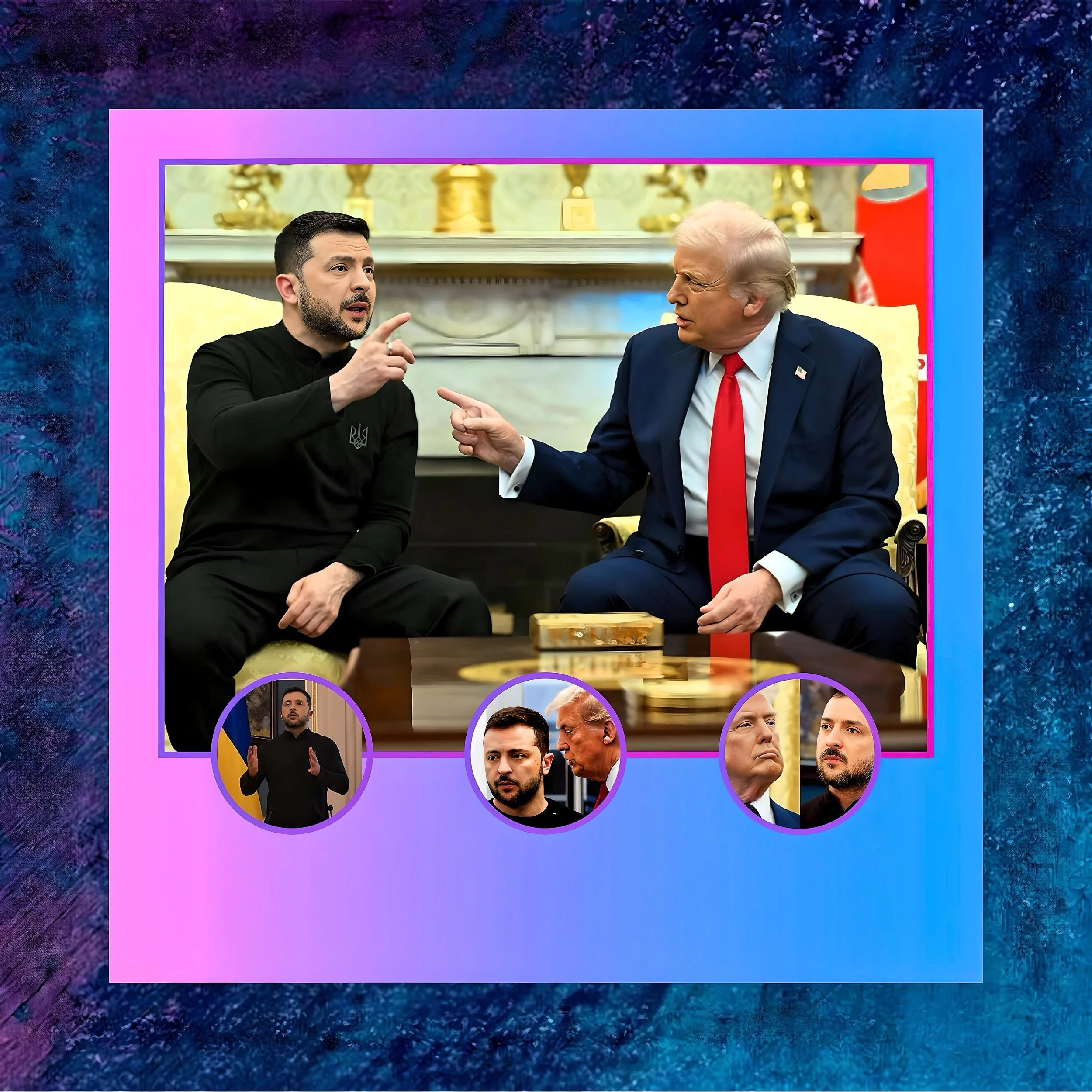Zelensky-Trump Oval Office Meeting: Confrontation Over Ukraine Aid and Mineral Deal
Introduction
The February 28, 2025, meeting between Ukrainian President Volodymyr Zelensky and U.S. President Donald Trump in the Oval Office marked a pivotal moment in U.S.-Ukraine relations, characterized by public clashes over military aid, security guarantees, and a contentious mineral resources agreement.
The 45-minute encounter, which was open to the press, revealed deepening fractures in the bilateral relationship. Trump pressured Zelensky to accept compromises with Russia while finalizing a deal granting the U.S. access to Ukraine’s critical minerals.
Below is a comprehensive analysis of the meeting’s key moments, outcomes, and implications for the ongoing Russo-Ukrainian war.
Escalating Tensions Over Security Guarantees and Compromises
The Clash Over Gratitude and Compromise
The meeting began cordially, with Trump greeting Zelensky in the White House courtyard and remarking on the Ukrainian leader’s casual attire—a black shirt emblazoned with Ukraine’s trident symbol.
However, tensions quickly flared once the leaders sat in the Oval Office.
Trump accused Zelensky of insufficient gratitude for U.S. aid, stating, “You’re in no position to dictate what we’re going to feel,” and demanding Ukraine “make a deal with Russia or we’re out.”
This ultimatum reflected Trump’s long-standing skepticism of unconditional support for Ukraine, emphasizing his transactional approach to foreign policy.
Zelensky countered by highlighting Russia’s atrocities, including forced deportations of children and war crimes, and insisted there could be “no compromises with a killer on our territory.”
He presented graphic images of Russian aggression, a move Trump dismissed as “disrespectful” and tantamount to “gambling with World War Three.”
Vice President JD Vance escalated the confrontation, interjecting, “Have you said ‘thank you’ once?” This remark underscored the administration’s frustration with Ukraine’s perceived intransigence.
Divergent Visions for Ending the War
Trump reiterated his belief that Ukraine must concede territory to Russia to secure peace, arguing, “You can’t do any deals without compromises.”
This stance aligns with his earlier suggestions that Ukraine cede Crimea and the Donbas region, a position Zelensky has consistently rejected.
The Ukrainian president, in turn, stressed that territorial concessions would legitimize Russia’s invasion and embolden further aggression.
The dispute highlighted a fundamental rift: Trump views the war pragmatically, prioritizing de-escalation and cost-saving for the U.S., whereas Zelensky frames the conflict as an existential struggle for sovereignty and democratic values.
The Rare Earth Minerals Agreement: Structure and Controversy
Terms of the Bilateral Deal
Despite the acrimony, the leaders finalized a landmark agreement granting the U.S. access to Ukraine’s rare earth minerals, including lithium, cobalt, and titanium—resources critical for advanced technology and defense industries. Under the deal:
Ukraine will contribute 50% of proceeds from state-owned mineral extraction to a joint fund managed by the U.S.
Though specifics remain vague, the U.S. will invest these revenues in Ukrainian infrastructure and economic projects.
No explicit security guarantees were included, though Trump suggested that American commercial presence would deter Russian attacks: “Nobody’s going to be messing around with our people when we’re there.”
Criticisms and Risks
Ukrainian officials initially resisted the deal, fearing it prioritized U.S. economic interests over Ukraine’s security needs. Critics argue that monetizing minerals could take decades, leaving Ukraine vulnerable.
Moreover, the absence of binding security commitments—such as NATO membership or arms provisions—leaves Kyiv dependent on Europe for defense, a prospect Trump openly endorsed.
Zelensky’s concession reflects mounting pressure to secure any form of U.S. support amid dwindling Western aid.
However, the agreement risks alienating European allies, who may perceive it as a U.S. attempt to shift responsibility for Ukraine’s defense.
Geopolitical Implications and Regional Reactions
U.S.-Russia Parallel Negotiations
While the Zelensky-Trump meeting dominated headlines, U.S. and Russian officials held separate talks in Istanbul to discuss embassy staffing and potential peacekeeping measures.
Though procedural negotiations signal Trump’s willingness to engage Moscow directly—a strategy that alarms Kyiv but aligns with his broader aim to reduce U.S. overseas commitments.
European Security Concerns
European leaders have expressed unease over the mineral deal’s implications. By tying U.S. involvement to economic gains rather than collective security, the agreement undermines NATO’s unity and significantly burdens EU states to counter Russian aggression.
French President Marine Le Pen warned that “the U.S. is treating Ukraine as a business venture, not a strategic partner,” a sentiment echoed by Baltic officials.
Media Strategy and Public Perception
Trump’s “Great Television” Remark
Trump’s quip that the confrontation would “make great television” underscores his prioritization of media spectacle over diplomatic decorum.
The staged nature of the meeting—broadcast live with heated exchanges—amplified his “America First” narrative, appealing to domestic audiences weary of foreign entanglements.
Zelensky’s Defiance as Political Theater
Zelensky, a former actor, leveraged the Oval Office setting to cast himself as a defiant underdog resisting superpower pressure. By refusing to yield on compromises, he bolstered his image domestically as a resolute wartime leader, even as his international leverage wanes.
Outcomes and Future Trajectory
Immediate Results
Mineral Deal Signed: The agreement formalizes U.S. access to Ukrainian resources, though implementation hurdles loom.
Aid Freeze Persists: Trump’s 90-day review of foreign aid remains in effect, leaving $61 billion in congressional appropriations for Ukraine in limbo.
No Progress on Security Assurances: Zelensky failed to secure explicit guarantees, heightening reliance on European support.
Long-Term Risks
Erosion of Trust: The public acrimony damages U.S.-Ukraine relations, potentially complicating future cooperation.
Russian Opportunism: Moscow may interpret the discord as a green light to escalate hostilities, testing Western resolve.
Domestic Political Fallout: Zelensky is being criticized in Ukraine for conceding to U.S. economic demands without tangible security benefits.
Conclusion
A Fragile Pact Amidst Strategic Divergence
The Zelensky-Trump meeting underscores the precarious state of U.S.-Ukraine relations under a transactional administration. While the mineral deal offers Kyiv a lifeline, its lack of security provisions leaves Ukraine vulnerable to Russian aggression and European political shifts.
Trump’s insistence on compromises with Moscow and his confrontational style has deepened Kyiv’s anxieties about abandonment. Ukraine’s survival may depend on its ability to diversify alliances and extract firmer commitments from Europe, even as the U.S. pivots toward economic interests over collective security.
The Oval Office clash, though dramatic, is likely a prelude to further turbulence as both nations navigate a rapidly evolving geopolitical landscape.






